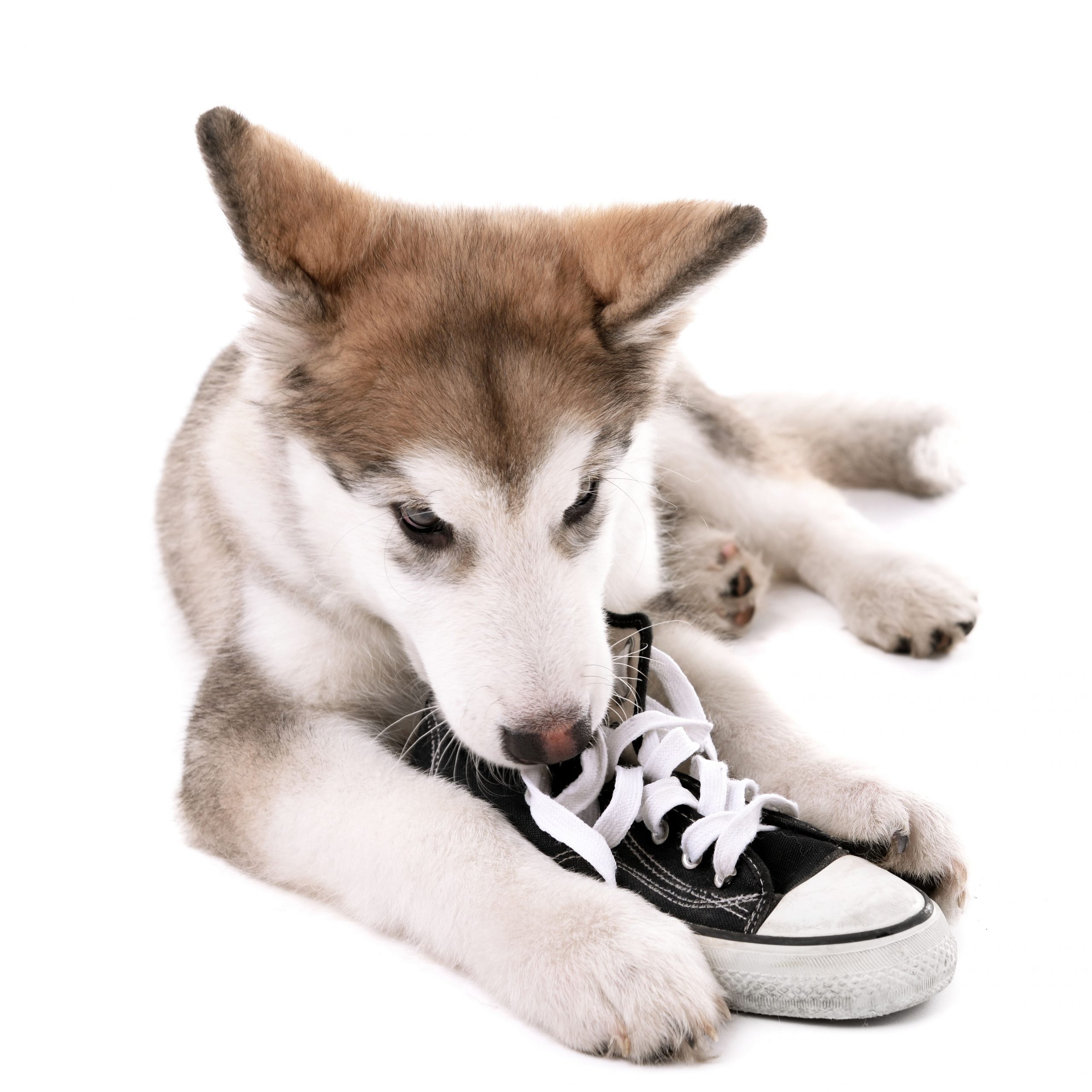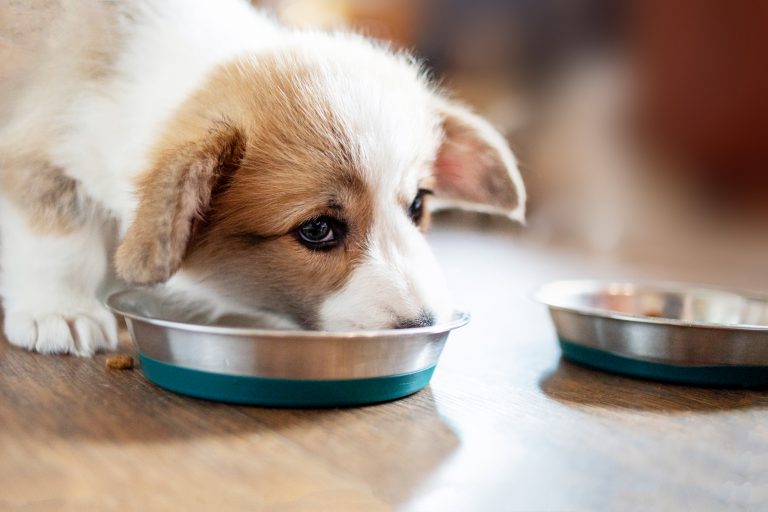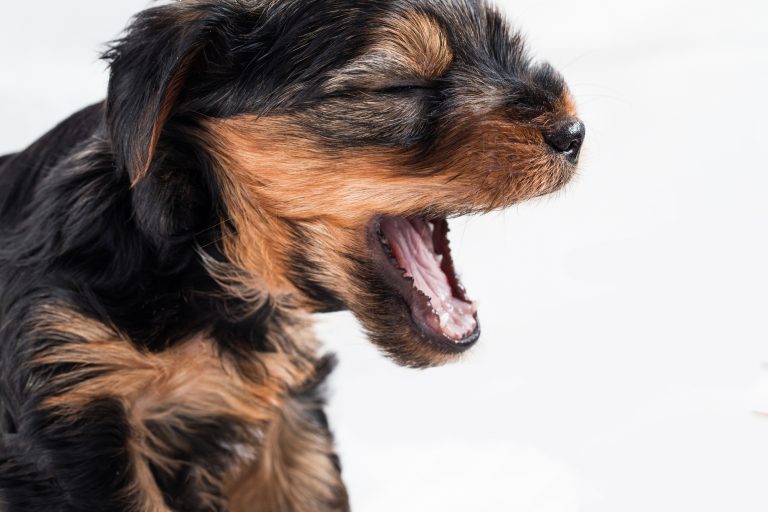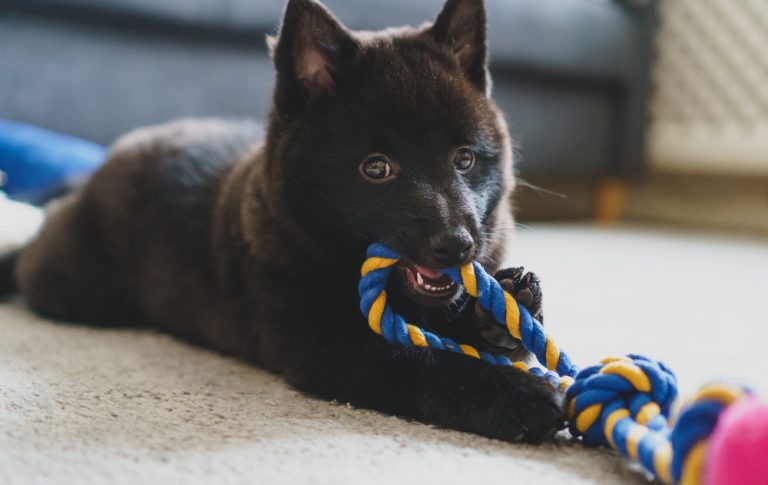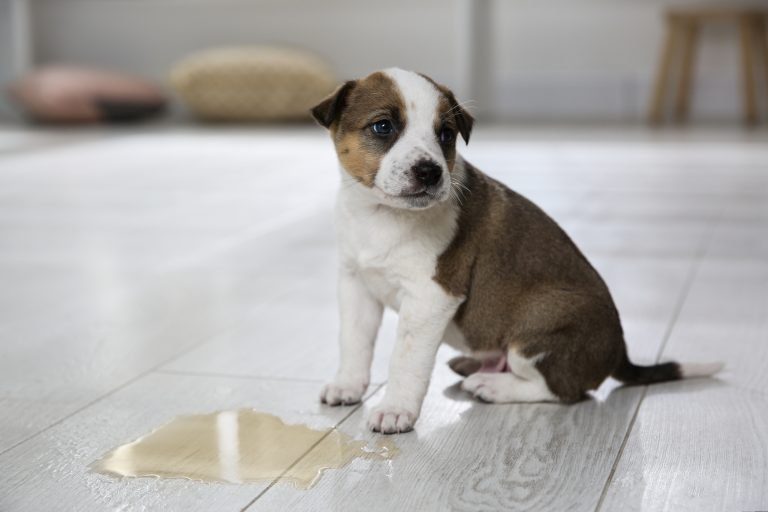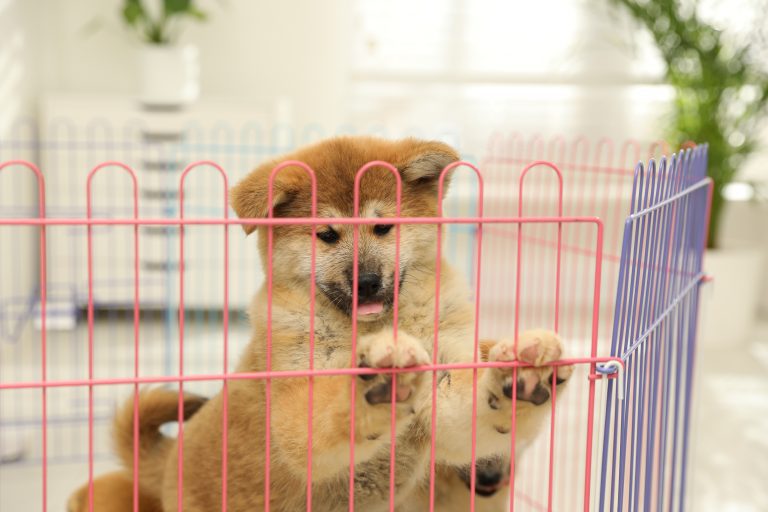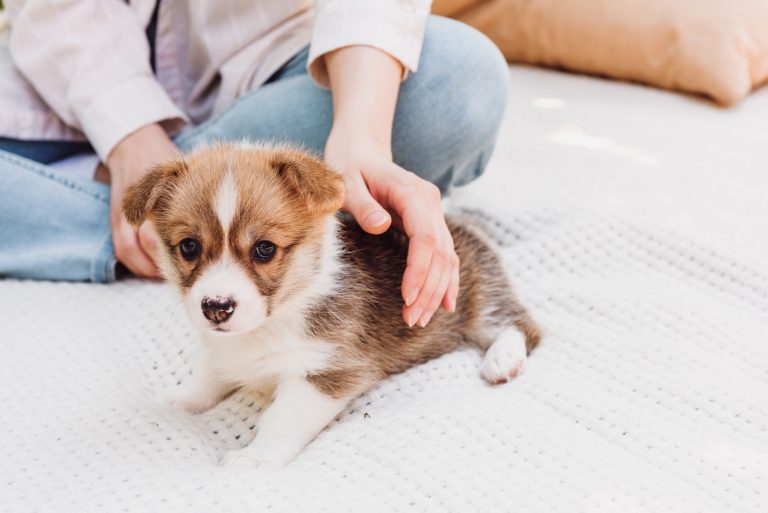When Do Puppies Stop Chewing? 5 Tips To Stop Your Chewing Problems!
We often associate puppyhood with playfulness and we are not wrong about that. However, you may have noticed your puppy behaving more aggressively than usual and your valued items are the main target of their playtime. Uh-oh. If it has frustrated you to the point of asking, “When do puppies stop chewing?”, it’s probably time to reassess your tolerance with them!
Chewing is one noticeable trait with puppies. It does not matter what the object is. They will get their tiny teeth on them and gnaw endlessly. It can indeed become a concerning matter and you’re not wrong to want to put a stop to this.
The biggest culprits of chewing among puppies are aggression, temper tantrums, teething, and lack of bite inhibition. With that said, these behaviors could be corrected with consistent training and patient control from the owner. With regards to teething, it takes 6 to 8 months for adult teeth to fully grow. Until then, appropriate chewing toys help in relieving little Fido’s discomfort.
In this blog post, we discuss the causes of puppy chewing in more detail and how you can solve them using practical and gentle approaches. We also recommend trusted, high-quality, and reasonably priced Amazon products that can make you and your pup’s life easier, thereby eliminating all the chewing.
Causes of Puppy Mouthing and Destructive Chewing
Chewing, gnawing, mouthing – whichever way you want to call it – stems from different causes. Fortunately, there are practical solutions you can apply given the helpful information professional trainers provide. We will get on to all of that in a moment!
While on the topic of chewing, there is one common misconception we would like to straighten out. Did you know, destructive chewing is not a natural part of puppyhood? Surprising, right? Even adult canines are capable of gnawing on random objects, even your most precious items. Talk about a lack of personal boundaries!
With regards to puppy mouthing, it is not a natural inclination for puppies to behave in a household, which is why they tend to do things that are not deemed as good behavior for us. Do remember that a dog’s mind is different from a human mind. They have a different perception of how they view the world.
Come to think of it, when they bring sticks to us, we might find them cluttered and messy pets, but in fact, they are just trying to play with us. When they bring us objects like dried leaves or small creatures, it is not meant to gross us out. They are actually offering us gifts as a sign of affection.
Generally, puppy chewing is definitely normal, but not destructive chewing! If your pet is exhibiting inappropriate chewing on your things, have no worries. There is a way to combat it and not give in to your pup’s destructive tendencies.
1. No Bite Inhibition
Puppies bite, chew, and mouth on objects and body parts. But when it gets too aggressive, it can hurt without them knowing. It may be cute when they are smaller and their bites are not as sharp but as they grow bigger, their teeth dig in deeper and can even break bones.
One thing to worry about puppies is they do not recognize the sensitivity of human skin. When this is not corrected, it becomes problematic in their adult years. Bite inhibition is the act of controlling biting or mouthing intensity by dogs to objects, persons, and other animals.
Unless they are trained from an early age, puppies have no recognition of pleasure and pain for humans, mistaking that all bites, mouths, and chews are friendly, harmless, and acceptable.
Pet owners most importantly should understand the importance of not tolerating every misbehavior from their puppies. It only takes one bite for your puppy to be labeled as a “dangerous pet” and it may be hard to redeem your pup’s good nature.
2. Puppy Aggression
Another reason why your puppy may still be gnawing on you or your stuff until now is that they feel defensive and bite or mouth on a person’s hand when petted, stroked, or touched in any form. Puppy aggression comes in different forms. Out of all the types, fear aggression, possessive aggression, and play aggression are the biggest culprits for your pup’s inept behavior. Let us dig deeper.
When regards to aggression, humans easily discredit fear as the main reason. But this is a very good reason for puppies running away even from the gentlest touch. If running away is not an option, they fight back. And this is where things can get ugly.
Figuring out what your puppy fears most is the main goal here. By knowing what objects or movements trigger their fear-based aggression, you would know how to approach them and gain their trust.
Possessive aggression is centered on protecting items your puppy considers valuable. As such, it is easy for them to target your hand. Likewise, in other instances that your feet or other body parts may touch or get near their valued item, they may bite on these parts as well.
Lastly, play aggression occurs when your puppy does not yet know how to invoke gentleness towards other puppies during playtime. Sometimes they could bite a little harder than expected and hurt their playmate. Aside from mouthing or gnawing, play aggression may include pouncing, jumping, growling, and barking.
3. Temper Tantrums
Just like children, puppies may throw tantrums when being made to do something they do not like, such as taking a bath or taking medicine. They may bite on your hand more intensely. Try not to yelp as this gives an indication that they are hitting your vulnerable spot. Remain composed and emotionless while holding them until they calm down.
Do this every time they throw a temper tantrum. If the behavior goes overboard, consider calling a professional trainer for help.
4. Teething
Teething is painful for anyone – humans and animals alike. This occurs when the milk teeth start to fall out and the adult teeth are ready to grow. For puppies, the teeth fully grow between 6 to 8 months of age. Teething induces excessive chewing for pain relief. All logic goes out the window and your pup will chew on anything they can get their mouths on to distract themselves from the pain. Even if you had a smart dog, they would not know the difference between chewing on a toy and chewing on your shoes, especially when they are dealing with discomfort.
For teething issues, it is a matter of waiting for their adult teeth to grow out. This is not something you can force and definitely not something to punish your pup for. For aggression, lack of bite inhibition, and such, you can turn to routine training sessions and habit-building to correct their behavior and reward obedience.
How To Solve Your Puppy’s Chewing Problems
Chewing is acceptable when your puppy has not sabotaged any of your belongings yet. But when your valuables are being destroyed one by one, it is time to evaluate their behavior and assess how you can correct their destructiveness.
We want to make things easy for you, so we put together a number of solutions you ought to try. Let us discuss them all below.
1. Socialization Training
We put socialization training on the top of the list because most puppies that chew relentlessly on anything, lack the social skills, behavior, and basic obedience expected from them in a household and around other puppies.
Both from our research and our own experience, we can say that puppies who interact with humans more as they are growing are less likely to bite or chew on items and body parts – either of humans or of fellow dogs. Being exposed to different kinds of interactions with puppies allows them to work on their bite inhibition. Puppies-to-puppies convey their emotions better and understand their behavior more than when only interacting with humans.
Puppies tend to rough play and their fellow pups know to respond quickly with no holds barred. Puppies usually stop playing when they are hurt, give it a few minutes of break, and go back to playing. This lets your little Fido learn puppy behavior in the most natural way. If they can learn from puppies, they may be able to apply this lesson when playing with people.
2. Home Training AKA “Yelp Method”
When playing at home and your puppy shows aggression or starts chewing inappropriately, make sure to cry out loudly enough to make your pup stop. Do this for each time your pup shows signs of mouthing on your body parts.
Do it no more than 3 times within a 15-minute period. Going beyond this window, walk around and do something else for a couple of minutes to indicate that painful chews halt play. This will temporarily put their mind off playing mode. Then, you can go back to playing with the same boundaries you set earlier. When home training is not enough, seek help from a professional dog trainer.
3. Substitute Valued Items with Toys or Treats
This is a simple trick that will have your pup stop chewing in no time. Give a toy or chew bone to distract them from chewing on your fingers, toes, or other body parts. You could also try offering treats with one hand when they bite on your other hand whenever you touch them. This will subconsciously let them get used to human touch without forcing or hurting them.
Avoid letting them get confused between household items and intended chew toys. Refuse to give them socks or shoes when you mean to give them toys instead. Otherwise, tolerance for this kind of setup lets them know it is okay to tamper with anything, regardless of whether the item is yours or theirs.
Most importantly, do not make fragile items easily accessible for them. Keep them out of reach and even out of sight to prevent enticing the pups. Below are some items you can get for your furkid to prevent them from chewing on your items or you.
Nylabone X-Shaped Dog Bone Chew Toy
The Nylabone Chew Toy is a fan favorite among Amazon purchasers, and this is for a good reason! This is a flexible chew toy that suits teething puppies of any size and breed. This eases their discomfort during the teething phase and keeps them busy from chewing on your personal belongings.
Flavored toys are today’s trend, and Nylabone is at the forefront with its yummy flavors offered: Beef, Beef & Cheese, and Bacon. From gentle chewers to extreme chewers, this X-Shaped Chew Toy offers the best value for money for loving pet owners.
Whether it is for treating or training your pup, these Wellness Soft Puppy Bites are perfect for playful pups undergoing obedience training. As dog owners, we got to do what we got to do to make our pups obey. Sometimes this means packing on the yummy treats that will make them listen to us with intent.
Bag sizes come in 3 ounces, 6 ounces, and 8 ounces. The available flavors include Lamb & Salmon, and Chicken & Carrots. These treats are packed with care and made with natural ingredients for soft, easy-chew delectable. No grain, corn, soy, or artificial flavors are added to ensure the wellness of little Fido.
4. Introduce Zero-Contact Play
Chewing or mouthing on you or your belongings does not mean you have to stop playing with your puppy altogether. You can be creative with your approach. For instance, start introducing zero-contact games. This includes tug-of-war, a game of fetch, dodgeball, and scavenger hunts.
Avoid wrestling, rough play with hands, or any play that requires physical contact. When your pup starts to mouth, hand them their go-to toy to encourage tugging instead of chewing. When done enough times, your puppy is inclined to search for a rope or a similar toy and play tug every time the urge to chew rises.
This is also applicable when there is an urge to chew on your body parts like fingers, arms, toes, and legs. This gradually corrects their behavior while increasing bonding time with you.
Mammoth Flossy Chews Color Rope Tug
This Mammoth Rope Tug is made extra sturdy for playful pups who love to play and chew. It suits games like tugging, tossing, fetching, and catching and surely meets your pup’s exercise needs.
It is made with cotton-poly yarn that proves to be safe and toxic-free for pups of any age, size, and chewing capability. When looking at its durability, this rope tug can accommodate endless tugs from dogs weighing 15 to 30 pounds. For extra features, you can choose 2-knot, 3-knot, 4-knot, or a 5-knot design. Excessive chewers can spend their energy on this rope tug for a good cause and satisfy their mouthing urges.
Beyond tugging, this rope tug is a natural toy for teeth cleaning and flossing for your pooch so teething pups can find comfort in this simple toy for sore gums. Design-wise, the Mammoth Rope Tug has a colorful structure that makes it easy to find in the sea of your pup’s other chewing necessities.
5. Provide Chew Toys to Relieve Teething Pains
While covering the topic of how to soothe puppy teething, I mentioned in the blog post that teething actually triggers fever, drooling, anxiety, and compulsive chewing among puppies. It is definitely not an easy phase for pups, much less for us owners who have no dog dental care expertise.
This is the best time to extend compassion and patience to our beloved pets since they cannot fully convey their sensations to us. At best, we can do our research in hopes of easing their discomfort and making their teething phase more bearable.
In the same blog post, we also shared 10 effective ways to soothe puppy teething. These included organic gel, frozen fruits, extra walking sessions, vet-prescribed analgesics, and apt chewing toys.
Sure, it is easy to just throw any toy your pup’s way to distract them from the pain, but this is not always the best approach. Considering how sensitive their mouth feels at the moment, we should be extra keen on choosing appropriate chewing toys for their enjoyment and safety.
While doing so, it’s important to avoid toys that have breakable parts and choking hazards. Choose toys made with toxic-free material that your pup can use reliably even beyond their teething phase. You’ll want to ensure that you ensure the safety of your pups in the process.
Final Answer: When Do Puppies Stop Chewing?
Excessive chewing is a real struggle among dog owners. Either the owners become submissive and tolerate their pup’s behavior or give up their pet altogether to salvage their belongings from being gnawed to destruction.
There are many causes as to why puppies chew and it’s through understanding them that allows us to discover the right solution to apply. Reasons such as tantrums, teething, and puppy aggression can naturally encourage chewing when not addressed immediately.
Socialization and exposure teach puppies basic obedience and social skills. These can gradually stop puppies from chewing. As for teething pains, it is only a matter of time (between 6 to 8 months) and apt chewing toys to comfort swollen mouths and surpass the teething stage – all while none of your belongings is sacrificed for your pup’s chewing urges.

